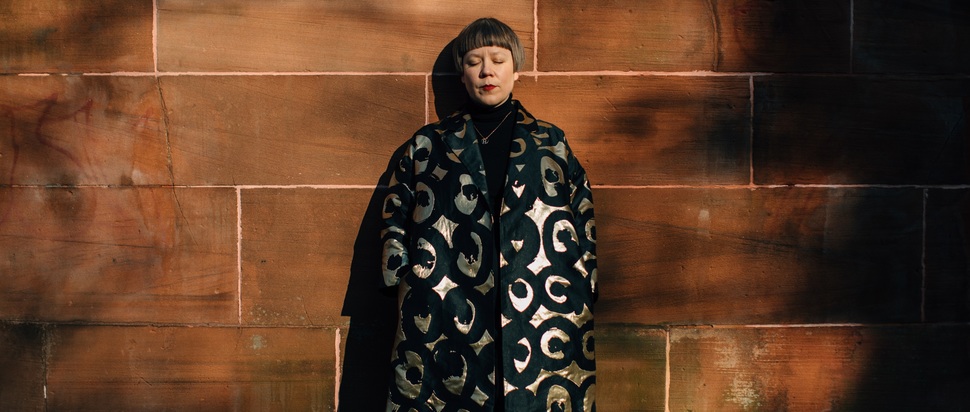Hanna Tuulikki: Mimicry Migrancy
Ahead of the Folkestone Triennial, Glasgow-based artist Hanna Tuulikki tells us about her new sound-based work which traces the migratory path of the sampling marsh warbler
“The marsh warbler is an extraordinary bird,” says artist Hanna Tuulikki. “It's a small migrating bird that breeds in Northern Europe, and then it migrates through the Mediterranean, through the Balkans, through the Middle East, right down through East Africa – some over winter in East Africa – and then some go right down to South Africa, which is an incredible feat in itself.”
Tuulikki’s love for the marsh warbler has nested itself in this year’s Folkestone Triennial, an outdoor contemporary art festival based in Kent. Curated by Sorcha Carey, Director of Collective in Edinburgh, this year’s iteration is titled How Lies the Land?, taking place from 19 July to 19 October. Through the lens of deep time, the festival explores the land’s pasts and imagines its futures. For Tuulikki, the marsh warbler offers a route to fly between the two.
“What's amazing about the marsh warbler is that it composes its song entirely from mimicry, from imitations or samples,” says Tuulikki. In the 1970s, Belgian ornithologist Françoise Dowsett-Lemaire found that the marsh warbler was imitating species along its migratory path, emerging as an audio travelogue of sorts. Mimicry – in its many forms – has long been a focus of Tuulikki’s sound-based work. “I define that [mimesis] as a practice of becoming-with, so the imitation or the emulation of more-than-human sound or movement within the human body, or with the human body, as a practice of making kin as a way of fostering empathy.”
Such empathy is key in Tuulikki’s research on Kent and its relationship with migration. With some migrants forced to enter the UK via crossing the Channel, the county is often held as a focal point from which right-wing media launch violent attacks upon migrants themselves. Politicians with similar motives have capitalised upon this rhetoric, thereby creating and exacerbating divisions within the community. In this, a history of defence within Kent persists: nowadays, disused military watchtowers and sound mirrors – made to detect enemy aircrafts – find themselves along the coast.
Like all birds, the marsh warbler is no stranger to defence. “There’s two main reasons why scientists say birds sing: to find a mate and in defence of territory,” says Tuulikki. “And I was really interested to remix these ideas and think about territory – not as a place of defence or a place of natural selection – but territory as a place of encounter.”
Collaborating with musicians across 27 nations, Tuulikki has collected songs from each territory along the marsh warbler’s migratory path. “It's been such a word-of-mouth thing – one person leading me onto the next person and the next person,” says Tuulikki. These songs have been remixed using the marsh warbler’s song structure, based on a seven-and-a-half-minute audio-recording of a marsh warbler taken by Tuulikki’s collaborator Geoff Sample, which has been extended to its human scale of roughly 21 minutes. “This composition is the imagined song of a speculative human avian hybrid.” Nowadays, the marsh warbler no longer resides along the Kent coast; Tuulikki’s composition, then, will be something of an imagined homecoming.
Love songs emerged as a natural note to follow. From the romantic to the familial, Tuulikki’s collected songs span the great breadth of love. “What's really striking is some of the shared themes that are emerging in the love songs, both lyrically and musically,” says Tuulikki. After all, we’re both migratory creatures: marsh warbler and human alike. “You can really feel the connections along this migration route.”
But no single song is the same. The composition will be mixed live with microphones positioned at the sound mirrors, collecting and reflecting each day’s unique rhythms and melodies. Audience members will listen to the composition in one of Folkestone’s military watchtowers.
“It's a very gentle, playful work as well,” says Tuulikki. Indeed, the artist is keen to connect with audiences – whether local or from further afield – and invite their own questions and ideas. “It's not dictating how we should be in the world. It's really open and it's made with love.”
The festival will see Tuulikki spread her wings in a number of performances, wearing a 1940s military aviation suit made complete by fabric printed with a visual score of the composition. Tuulikki’s composition will reshape itself yet again as she activates the sound mirrors with her own voice.
In her research, Tuulikki has learned a great deal from the marsh warbler and its travels; she’s excited for others to share in this joy. Through migration, we connect with others; and, if we’re lucky enough, we might pick up a song or two.
The Folkestone Triennial takes place from 19 Jul to 19 Oct
